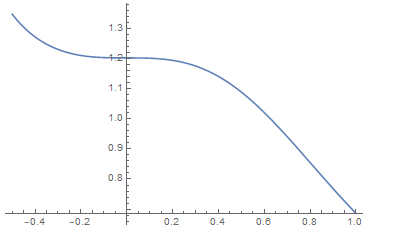We have the partial fraction decomposition $$\frac{ca^2}{k^3+a^3}=\frac{-\omega}{k-a/\omega }+\frac{\omega -1}{k+a}+\frac{1}{k-a \omega},$$ where $c:=3(\omega-1)$ and $\omega:=e^{i\pi/3}$. Also, $$\sum_{k=1}^n\frac1{k+b}=\ln n-\psi(1+b)+o(1)$$ (as $n\to\infty$), where $\psi$ is the digamma function. Collecting the pieces, for $a\in(-1,\infty)\setminus\{0\}$ we get $$s(a):=\sum_{k=1}^\infty\frac1{k^3+a^3} =\frac1{ca^2}\, \left((1-\omega) \psi(1+a)+\omega\psi\left(1-a/\omega\right) -\psi(1-a \omega)\right).$$ (For $a\to0$, $s(a)=-\psi ^{(2)}(1)/2+O(a)=\zeta(3)+O(a)$.) $$s(a)=-\frac{\psi ^{(2)}(1)}{2}-\frac{\pi ^6 a^3}{945}+O\left(a^4\right) =\zeta(3)-\frac{\pi ^6 a^3}{945}+O\left(a^4\right).$$
Here is the graph $\{(a,s(a))\colon0<a\le1\}$, with $s(0)=\zeta(3)=1.2020\ldots$:
(I am not geting instability.)


